| ________________
CM . . .
. Volume XVIII Number 37. . . .May 25, 2012 
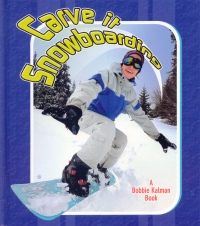 |
Carve It Snowboarding. (Sports Starters).
Jaime Winters.
St. Catharines, ON: Crabtree, 2012.
32 pp., pbk. & hc., $9.95 (pbk.), $20.76 (RLB.).
ISBN 978-0-7787-3159-7 (pbk.), ISBN 978-0-7787-3148-1 (RLB).
Subject Heading:
Snowboarding-Juvenile literature.
Grades 2-3 / Ages 7-8.
Review by Gail Hamilton.
**½ /4
|
| |
|
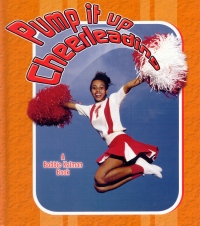 |
Pump It Up Cheerleading. (Sports Starters).
Margaret Webb.
St. Catharines, ON: Crabtree, 2012.
32 pp., pbk. & hc., $9.95 (pbk.), $20.76 (RLB.).
ISBN 978-0-7787-3160-3 (pbk.), ISBN 978-0-7787-3149-8 (RLB).
Subject Heading:
Cheerleading-Juvenile literature.
Grades 2-3 / Ages 7-8.
Review by Gail Hamilton.
**½ /4 |
| |
|
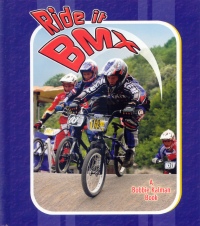 |
Ride It BMX. (Sports Starters).
Rachel Stuckey.
St. Catharines, ON: Crabtree, 2012.
32 pp., pbk. & hc., $9.95 (pbk.), $20.76 (RLB.).
ISBN 978-0-7787-3161-0 (pbk.), ISBN 978-0-7787-3150-4 (RLB).
Subject Heading:
Bicycle motocross-Juvenile literature.
Grades 2-3 / Ages 7-8.
Review by Gail Hamilton.
**½ /4
|
| |
|
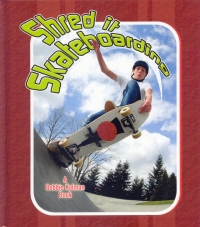 |
Shred It Skateboarding. (Sports Starters).
Jaime Winters.
St. Catharines, ON: Crabtree, 2012.
32 pp., pbk. & hc., $9.95 (pbk.), $20.76 (RLB.).
ISBN 978-0-7787-3162-7 (pbk.), ISBN 978-0-7787-3151-1 (RLB).
Subject Heading:
Skateboarding-Juvenile literature.
Grades 2-3 / Ages 7-8.
Review by Gail Hamilton.
**½ /4
|
| |
|
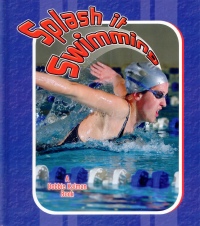 |
Splash It Swimming. (Sports Starters).
Trudee Romanek.
St. Catharines, ON: Crabtree, 2012.
32 pp., pbk. & hc., $9.95 (pbk.), $20.76 (RLB.).
ISBN 978-0-7787-3163-4 (pbk.), ISBN 978-0-7787-3148-1 (RLB).
Subject Heading:
Swimming-Juvenile literature.
Grades 2-3 / Ages 7-8.
Review by Gail Hamilton.
**½ /4
|
| |
|
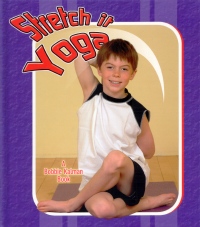 |
Stretch It Yoga. (Sports Starters).
Kyla Wilson.
St. Catharines, ON: Crabtree, 2012.
32 pp., pbk. & hc., $9.95 (pbk.), $20.76 (RLB.).
ISBN 978-0-7787-3164-1 (pbk.), ISBN 978-0-7787-3153-5 (RLB).
Subject Heading:
Hatha yoga-Juvenile literature.
Grades 2-3 / Ages 7-8.
Review by Gail Hamilton.
**½ /4 |
| |
|

excerpt:
When skaters grind, they travel along a handrail on the metal trucks of their skateboard. They do an ollie to jump up onto the handrail. Then they push down on the board with their feet to lock both trucks onto the rail and scoot over it. Skaters can grind on the front or back truck, lifting up the other end of the board.
Anything skaters can grind on, they can also slide on- gliding along a bench or bar on the bottom of their board. They ollie up onto the bench and then slide along it. Skaters can also do noseslides or tailslides on one end of the board as the other end hangs out over the edge of the bench or bar. (From Shred It Skateboarding.)
Six new titles join the "Sports Starters" series, now numbering 18 volumes. Designed for young readers, this series describes the rules of the featured sport, the clothing and equipment required, the skills and movements, terminology, safety precautions, competitions and scoring, benefits of the sport, and also highlights some well-known participants. It also offers tips on how to get started if one is interested in trying the sport. The books' smaller size and colourful covers will attract the target audience, as will the large, simple font size and the abundant photographs. Children depicted in the photos represent both genders and different ages and ethnicities, another plus. Though the text is written in kid-friendly language and explains the sports rather well, the problem with books such as these is that, in order to really learn a sport, kids have to get out there and try it for themselves. It is too hard to learn just by reading about it or examining a photograph. (Even the photographs are limited in that they can only capture a segment of a complete move.). If the purpose of these books is to pique a child's interest, some titles succeed more than others, specifically the books about skateboarding, snowboarding and BMX riding. A table of contents, a glossary and an index are provided.
Snowboarding is a popular winter sport that requires balance and coordination. It is similar to surfing, skiing and skateboarding, albeit in different ways. Carve It Snowboarding describes the clothing and equipment needed for the sport, the best places to ride, terms such as "half-pipe," "traversing" and "amplitude," snowboarding safety, and the various moves, such as carved turns and skidded turns. There are tips on how to figure out which foot should lead on the snowboard (regular-footed means that the left foot is first; goofy-footed means that the right foot leads) and how to use a T-bar and a chairlift to get up the hill. Other topics in this title include freestyle, racing (of which there are three kinds: parallel slalom, parallel giant slalom and snowboard cross), and snowboarding competitions during which participants are awarded points by judges. Finally, two Olympians are featured, Shaun White, who won gold medals in the half-pipe at the 2006 and 2010 Olympics, and Hannah Teter, who also won a gold medal for the half-pipe in 2006 and silver in 2010.
Cheerleading was invented by a man in 1896 to cheer on a football team, and all of the cheerleaders on the squad were male. This sport combines gymnastics, dance and stunts and is performed at the high school, university and professional levels. Pump It Up Cheerleading provides information about the clothing worn for both practices and performances, training (with an emphasis on safety), and the various moves, which range from hand-clapping to jumps, tumbling, and pyramid formation. Hand and arm gestures (who knew that hand-clapping could be so complex?), chanting, and performing to music are also covered. In this title, readers will learn the terms "bases," "flyers" and "catchers," terms which refer to the roles that participants play in cheerleading stunts. Perhaps most amazing is how popular cheerleading competitions are all over the world. Walt Disney World in Florida hosts the biggest competition, the World Cheerleading Championship, which is broadcast to 60 countries.
Ride It BMX highlights bicycle motocross which is bike racing on dirt tracks. Freestylers can do tricks on flat ground, half-pipes, ramps and outdoor trails, whereas BMX racers use tracks with jumps and other obstacles. There is a diagram showing a typical BMX track with a tabletop jump, a berm, double and triple jumps and a straightaway. This is followed by information about the start of a race (said to be the most important part of a BMX race and for which riders practice the most), and race rules and strategies. There are different types of freestyle riding. Park BMX involves speed, momentum and gravity, all of them necessary to perform tricks at skateparks that are constructed with ramps, bowls and other obstacles; trail BMX, requiring flow and style, is done on outdoor trails whose jumps (a 4-pack, 6-pack or even an 8-pack) are made from dirt; and flatland BMX, which is done on a smooth surface, such as a parking lot or schoolyard, and there are no tracks or ramps. An offshoot of trail BMX is dirt jumping in which steep jumps result in a longer time for the rider to be in the air, allowing for more and complicated tricks. Readers will also learn about BMX races and competitions (age divisions, rules and judging) and some of the most successful BMX racers in the world.
Skateboards are very much like surfboards on wheels. In fact, this sport first caught on with surfers. Requiring very little equipment, skateboarding is an individual sport that can be done on almost any smooth surface. In Shred It Skateboarding there are diagrams showing the parts of a skateboard and a typical bowl skatepark. Just as in snowboarding, riders can be regular or goofy-footed. Moves include pushing off to gain momentum, footbreaking or pulling a stop wheelie to stop the board, carving and kick turns to change direction, gliding, and doing an ollie (flying through the air with the skateboard still touching the skater's feet). Once the basic ollie is mastered, skaters can grind or slide, which means that they can travel along a bench or handrail. There are special moves that need to be learned if a skater is going to use a "vert" ramp at a skatepark, some of which are dropping in to enter the half-pipe, pumping (riding back and forth on the half-pipe to get airborne), handplants, and various types of grabs (nose, indy and airwalk). Finally, there is information about skateboarding competitions and two skateboard pros, Elissa Steamer and Ryan Sheckler.
Splash It Swimming focuses on competitive swimming, both individual and relay racing. International competitions take place in short-course pools (25 m long) and long-course pools (50 m long), the latter being used for Olympic swimming events. The characteristics and movements of the various strokes, such as the front crawl, breaststroke, butterfly and backstroke, are described along with the different types of races and the number of laps required to swim a specific distance (for example, in a 1500-metre race a swimmer would have to swim 30 laps). Other topics in this title include freestyle and medley relays, competition rules, and how swimmers start a race and make their turns when they reach the pool wall. Several Olympic medal winners are listed, the most noted being Michael Phelps, who, having won 14 medals, holds the record for most Olympic gold medals won by an individual in any sport. In 2004, at the Athens Olympics, he won six gold and two bronze, and in Beijing, four years later, he took home eight gold medals.
Meaning "joined" in Sanskrit, referring to the union of body and mind, yoga has been practiced for over 5,000 years. Its benefits are many: it strengthens the body and makes it more flexible; it improves balance and posture; and it helps people to think clearly, concentrate and relax. Only a yoga mat and loose, comfortable clothing are needed. Stretch It Yoga stresses the importance of having a calm, quiet place in which to practice as well as the importance of warming up and proper breathing techniques. Photographs show readers several asanas (poses), such as the tree pose, the cobra and the downward dog. Yoga competitions require the participant to perform a series of seven poses in three minutes. The first five poses are compulsory, and the last two are the competitor's choice. Readers might be surprised that many famous athletes, such as basketball player Shaquille O'Neal, and tennis stars Venus and Serena Williams, study yoga.
Most of the books in this series will prove popular with youngsters, but readers will gain far more benefit- fun and fitness- from actually participating in the sport than reading about it. As the Nike slogan says, "Just do it!"
Recommended.
Gail Hamilton is a former teacher-librarian in Winnipeg, MB.

To comment
on this title or this review, send mail to cm@umanitoba.ca.
Copyright © the Manitoba Library Association. Reproduction for personal
use is permitted only if this copyright notice is maintained. Any
other reproduction is prohibited without permission.
NEXT REVIEW |
TABLE OF CONTENTS FOR THIS ISSUE
- May 25, 2012.
AUTHORS |
TITLES |
MEDIA REVIEWS |
PROFILES |
BACK ISSUES |
SEARCH |
CMARCHIVE |
HOME |





